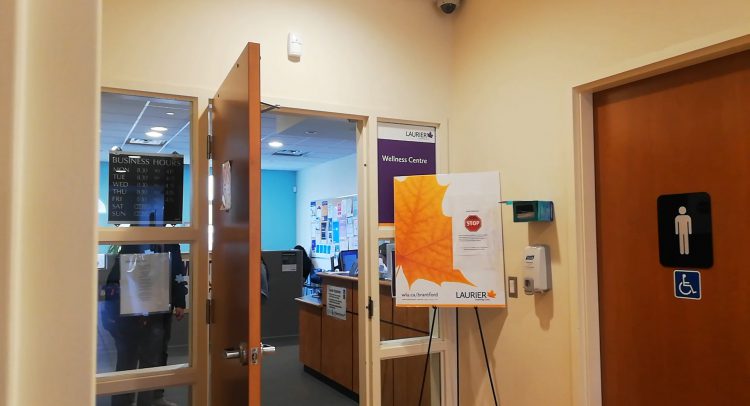AS SCHOOLS LOOK FOR A SOLUTION TO LONG WAIT TIMES FOR MENTAL HEALTH APPOINTMENTS, STUDENTS TAKE THE LEAD.
By Jason Morgan
“I think that I could say most of my friends have mental health issues, and I don’t think I’m alone in that,” says Erin Quinn, Peer Connect co-ordinator at Wilfrid Laurier University’s Waterloo, Ont., campus. “I can confidently say that every single post-secondary student either has mental health issues or knows someone that does.” In her role, Quinn oversees a student-driven mental health awareness committee that organizes wellness events and connects students to available resources, separate from the university’s wellness centre and funded by the students’ union. That gives her a unique view of the mental health landscape on campus. ”We don’t run things similar to the Wellness Centre…. The impacts that we have on students are more quiet, are more of them potentially alone or isolated scrolling through their social media,” says Quinn.
Universities are struggling to meet the demand for mental health support and resources, especially when it comes to reducing the wait times for students to see a mental health professional. Student-led organizations are stepping in to fill some of the gaps and reduce the stigma around talking about mental health, but universities must step forward and do more.
In the past generation, attitudes toward mental health have changed significantly, and more people are comfortable discussing their issues and seeking help than ever before. At the same time, more students are reporting declining mental health as well as overall physical health, according to the National Association of Graduate-Professional Students. That means universities have to catch up and provide the timely support and resources students need, which can be challenging and expensive.
Student-led initiatives like Peer Connect help fill the gap and may be more responsive to what students say they want. The services offered by Peer Connect have changed considerably since it transitioned to its current model in 2012. Before that, it was a part-time hotline staffed by students who directed their peers to mental health resources on and off campus. In the course of a year, Peer Connect transformed into the committee it is today, offering workshops and stress-busting events as well as peer education face-to-face, based on feedback received from students. It’s overseen by a five-member executive with almost 50 volunteers at the Waterloo campus. “Students who are in those roles, there’s a reason why they’re in their roles, whether it’s personal experience or the experiences of family members or friends,” says Nathan Reeve, wellness education co-ordinator at the Waterloo campus and the Peer Connect co-ordinator in 2015.
As a student-led organization, there is only so much Peer Connect and similar initiatives can do. Most students still rely on services offered through the university wellness centre, where wait times can be long. That’s because most wellness centres operate on a triage model in which students with the most urgent needs are seen right away, while those with temporary sadness or exam period stress have to wait days or sometimes weeks for an appointment. When students are seen by a professional, they often are treated with simple remedies first, such as educational pamphlets or self-care tips, before they are escalated to other forms of therapy or an appointment with a counsellor.
Some schools are experimenting with a new system that sees students receive same-day treatment, in which health professionals provide the required resources students feel they need, whether that’s a therapy appointment the same week or help organizing a study schedule. The system is called the Stepped Care Model 2.0 and has shown some success at Dalhousie University, in Halifax, as well as McGill University, in Montreal. “It isn’t just some sort of expert saying, ‘Here’s the model, and we’re going to implement it, and then hope it works for everyone,’” says Dr. Peter Cornish, who developed the updated model. It was a collaboration between mental health professionals and students. “They have a lot of ideas about how we need to change programming… they actually wanted access to be not so rigid,” says Cornish, highlighting the main goal of the new model, which is cutting wait times.
In the original version of the Stepped Care Model, students had to work through every level of available mental health care before being offered the care they wanted, often starting with at-home self-care and slowly escalating to counselling or an appointment with a psychiatrist if issues persisted. Under the new model, students get the care they ask for. This means resources aren’t tied up and wait times diminish since students can get what they need right away instead of going through all the steps over the course of weeks or months.
Implementing the new model takes time and isn’t a cure-all, says Cornish. Queen’s University, in Kingston, Ont., implemented the model over the summer of 2019 but the results left students unsatisfied. “There’s been, on the administration side, this kind of cultural denial of responsibility for student mental health,” says Raechel Huizinga, news editor of The Queen’s Journal, who has written and overseen many mental health news articles. She says students are often given inaccessible options at their intake appointments. “Being referred to therapists outside of school, I would say, is one of the most problematic parts of university counselling, because not all students have the financial means,” says Huizinga.
Until universities figure out how to provide resources in a more effective manner, student initiatives will continue to fill the gap to help their peers through difficult times. “Mental health is a very, very real and current issue,” says Peer Connect’s Quinn. “It’s something I’ve been working with since high school…. I think that I’ll always be a mental health advocate.”

